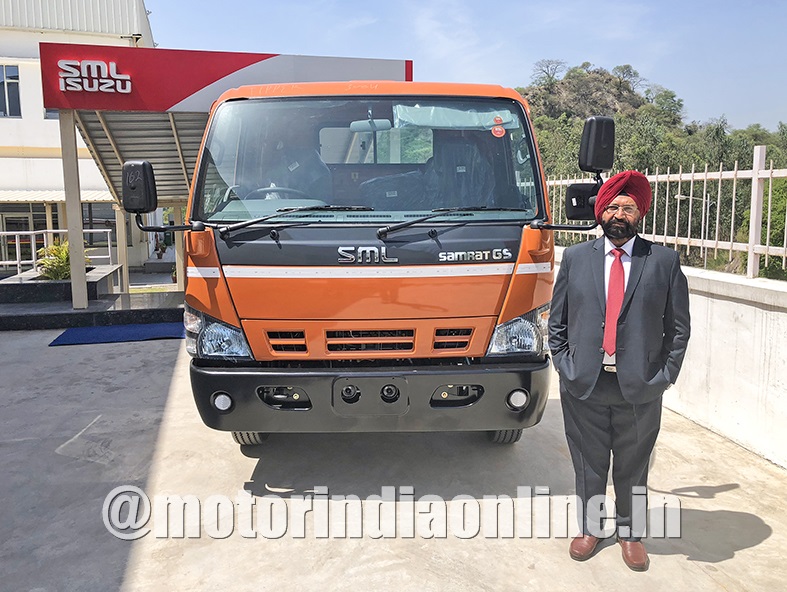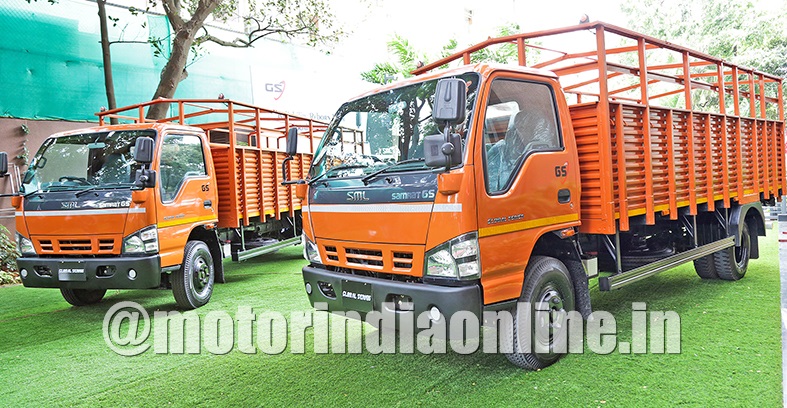In conversation with Mr. M. S. Ramta, Senior Vice-President (R&D and Product Development) – SML Isuzu Ltd. (SMLI), on the OEM’s state of affairs on various processes of research and development, in the run up to the emerging market needs and various regulatory compliance, including BS-VI emission norms.

One of the leading commercial vehicle manufacturers in the light and medium duty segments for decades, SML Isuzu has embarked on a new era of manufacturing since last year. This is in’t an exaggeration, one can out-rightly notice a plethora of changes happening at various levels within the company’s product design, development and manufacturing by leveraging its in-house capabilities and global expertise of its partners to the fullest extent possible.
The next-generation ‘Global Series’ truck range, for instance, best exemplifies the brand’s manufacturing evolution in pursuit of changing market needs and consumer preferences. Under the skin of the new Isuzu-designed cabin lies SMLI’s in-house ability to rework the platforms and completely localise the same to stay cost-effective. The company has already operationalised a new assembly line for cabin and truck chassis, and has increased the number of engineers dedicated to R&D consistently over the last two years.
In an exclusive interaction with MOTORINDIA, the man at the helm of affairs at R&D and product development at SMLI, Mr. Ramta admitted that these changes are happening at a critical juncture. “Amid all technological disruptions and market maturation comes a series of regulatory compliance for vehicles in recent years. Such mandates come with rigid time frame, which are unprecedented”, he observed, while referring to standards like AIS 052, AIS 063, AIS 93, AIS 140, AIS 153, and BS-VI emission norms that are due next year.
Short lead time for compliance
He said that even developed markets have had ample lead time to get their technologies and products ready than what is being offered in India. “For BS-VI, Indian OEMs were given just three years, which means automakers are forced to prepone their planning and work in advance to bring out products right on time”. This has put immense pressure not just on us but also on component suppliers to come up with right solutions that are both efficient and cost-effective”, he added.
Further, Mr. Ramta finds inadequate time available for validation and evaluation of new products, especially that of BS-VI. “Our objective is not just to meet the statutory requirement, but also pay heed to challenges that come in the later stages, including stringent, long-term on-road tests of vehicles, reliability studies to suit Indian conditions, training and equipping service teams, and so on. Any lapse in these stages would result in pre-matured products on the road which can seriously affect customer satisfaction and brand reputation.”
The surging costs of raw materials like steel and interior trims also impact our design and product costs ultimately. Ever since the Bus Code was enforced across the country, the prices of key materials are sky-rocketing. He noted. “To stay cost-competitive, we have to explore alternative products and sources, creating some disruptions”. SMLI boasts a state-of-the-art in-house bus body design division that does all R&D for bus products including exterior styling and interior layouts.
Right on time for BS-VI
“With respect to infrastructure and resource capital, our R&D capabilities are on par with industry standards. We have made fresh investments in upgrading our design, prototyping, testing and validation systems, while also collaborating with specialised agencies like iCAT and ARAI to enhance our processes”, Mr. Ramta said.
SMLI’s entire R&D processes, he claimed, are completely done in-house and are fully integrated, although involving different testing and homologation processes for various aggregates, including chassis, sheet metal, powertrain and transmission, electricals, and so on. Constant improvisation on the lines of fuel efficiency and reliability of engines and transmission, interior ergonomics and comfort, cabin NVH levels, body innovation for buses, etc., are the major thrust areas, he added.
In the run-up to BS-VI, SML Isuzu claims to be right on time targets. “We have already begun the calibration and on-field evaluation of BS-VI vehicles at different terrain and weather conditions”, said the R&D head. He revealed that the BS-VI engine development was done all by SMLI and technology partner teams, with fuel injection system sourced from Bosch and exhaust after-treatment technology from reputed suppliers.
The automaker claims to have undertaken ample studies before upgrading its existing engine to the new emission standards. The diesel engine’s legacy goes back to the original Mazda powertrain design, which has withstood the test of time and serious technical upgradations all these years, including for that of BS-IV lately. SML Isuzu right now boasts three iterations of the engine, including the one that is tweaked to run on CNG.
Asked about future projects that SMLI is working on, Mr. Ramta said that futuristic experiments are always part of our agenda, so as to meet the changing market needs and consumer preferences, and stay ahead in the competition.
